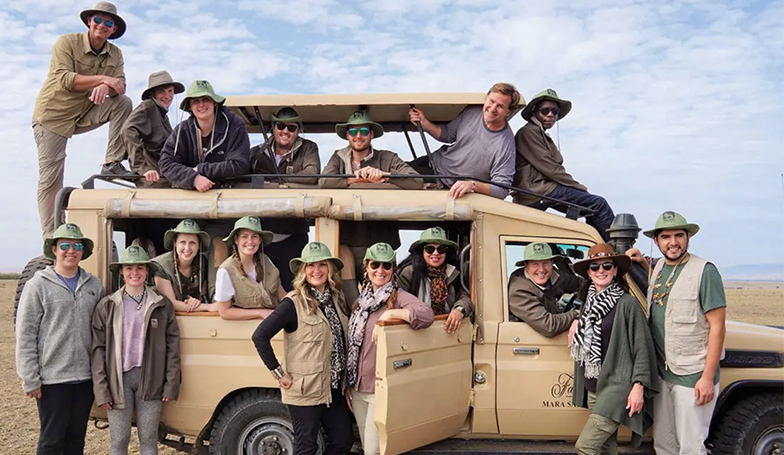
1. What is a wildlife safari?
– A wildlife safari is a journey into natural habitats, often in national parks or reserves, to observe and photograph wildlife in their natural environment.
2. Where are the best places to go on a wildlife safari?
– Some of the best places for wildlife safaris include Africa (Kenya, Tanzania, South Africa), India (Ranthambore, Jim Corbett National Park), and South America (Galapagos Islands, Amazon Rainforest).
3. What types of animals can I expect to see on a safari?
– Depending on the location, you can expect to see a variety of animals including lions, elephants, giraffes, zebras, rhinos, leopards, cheetahs, buffalo, and many more.
4. When is the best time to go on a safari?
– The best time to go on a safari depends on the location and the animals you want to see. Generally, dry seasons are better for wildlife viewing as animals tend to gather around water sources.
5. What should I pack for a safari?
– Essentials include lightweight clothing, a hat, sunscreen, insect repellent, sturdy walking shoes, a camera with extra batteries and memory cards, binoculars, and any required medications. We have a dedicated article on this.
6. Do I need vaccinations for a safari?
– It’s recommended to check with your doctor for specific vaccinations required for the region you plan to visit.
7. Are safaris safe?
– Safaris are generally safe when conducted by reputable operators and following safety guidelines. However, it’s essential to listen to your guide’s instructions and stay inside designated areas.
8. How long do safaris last?
– Safaris can vary in duration from a few days to several weeks, depending on the itinerary and destination.
9. What types of accommodations are available on safari?
– Accommodations range from luxury lodges and tented camps.
10. Can children go on safaris?
– Yes, many safari operators cater to families and offer child-friendly activities and accommodations.
11. What is game driving?
– Game driving involves exploring the wilderness in a vehicle, typically a 4×4, to observe wildlife.
12. Are walking safaris safe?
– Walking safaris are generally safe when accompanied by experienced guides. Safety precautions are taken to minimize encounters with dangerous animals.
13. What is the Big Five?
– The Big Five refers to five iconic African animals: lion, elephant, buffalo, leopard, and rhinoceros.
14. Do I need a guide on safari?
– While it’s possible to go on a self-drive safari in some places, having a knowledgeable guide enhances the experience by providing insight into wildlife behavior and local ecosystems.
15. Can I take photographs on safari?
– Yes, photography is a popular activity on safaris. Remember to respect wildlife and follow guidelines for ethical wildlife photography.
16. What is the best time of day for wildlife viewing?
– Early morning and late afternoon are the best times for wildlife viewing when animals are most active.
17. What is a night safari?
– A night safari involves exploring the wilderness after dark using spotlights to observe nocturnal animals.
18. Do I need travel insurance for a safari?
– It’s mandatory to have travel insurance that covers medical emergencies, trip cancellations, and evacuations.
19. Can I customize my safari itinerary?
– Yes we do offer customizable itineraries to suit your preferences and interests.
20. Do you offer responsible tourism on safari?
– Yes we do, and it involves minimizing your impact on the environment and wildlife by following guidelines, supporting conservation efforts, and respecting local communities.
21. How do I choose the right safari?
– Research the animals you would like to see and if its suitable for your needs, talk to sand we will happily guide you.
22. What is the Great Migration?
– The Great Migration is an annual movement of millions of wildbeast, zebras, and other animals between Tanzania and Kenya in search of greener pastures.
23. Can I go on a safari alone?
– While solo safaris are possible, it’s often more enjoyable and safer to go with a group or with a reputable safari operator.
24. What is a bushwalk?
– A bushwalk, or walking safari, involves exploring the wilderness on foot with a guide to observe wildlife and learn about the environment up close.
25. Are safaris wheelchair accessible?
– Some safari lodges and reserves offer wheelchair-accessible accommodations and vehicles, but accessibility can vary.
26. What is birdwatching on safari?
– Birdwatching on safari involves observing and identifying bird species in their natural habitats, which can be particularly rewarding in diverse ecosystems.
27. What is the difference between a national park and a game reserve?
– National parks are government-protected areas with strict conservation regulations, while game reserves may allow limited human activity such as hunting or farming.
28. What is a mokoro safari?
– A mokoro safari is a traditional canoe excursion, often found in the Okavango Delta in Botswana, where travelers are guided through water channels to observe wildlife from a unique perspective.
29. How can I support wildlife conservation on safari?
– You can support wildlife conservation by choosing eco-friendly accommodations, avoiding single-use plastics, respecting wildlife and their habitats, and donating to reputable conservation organizations.

